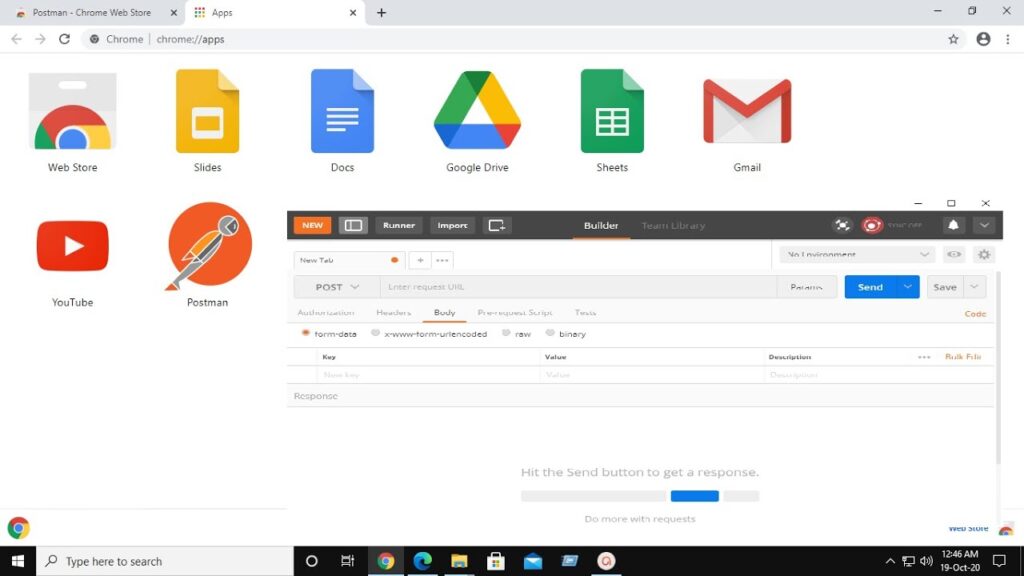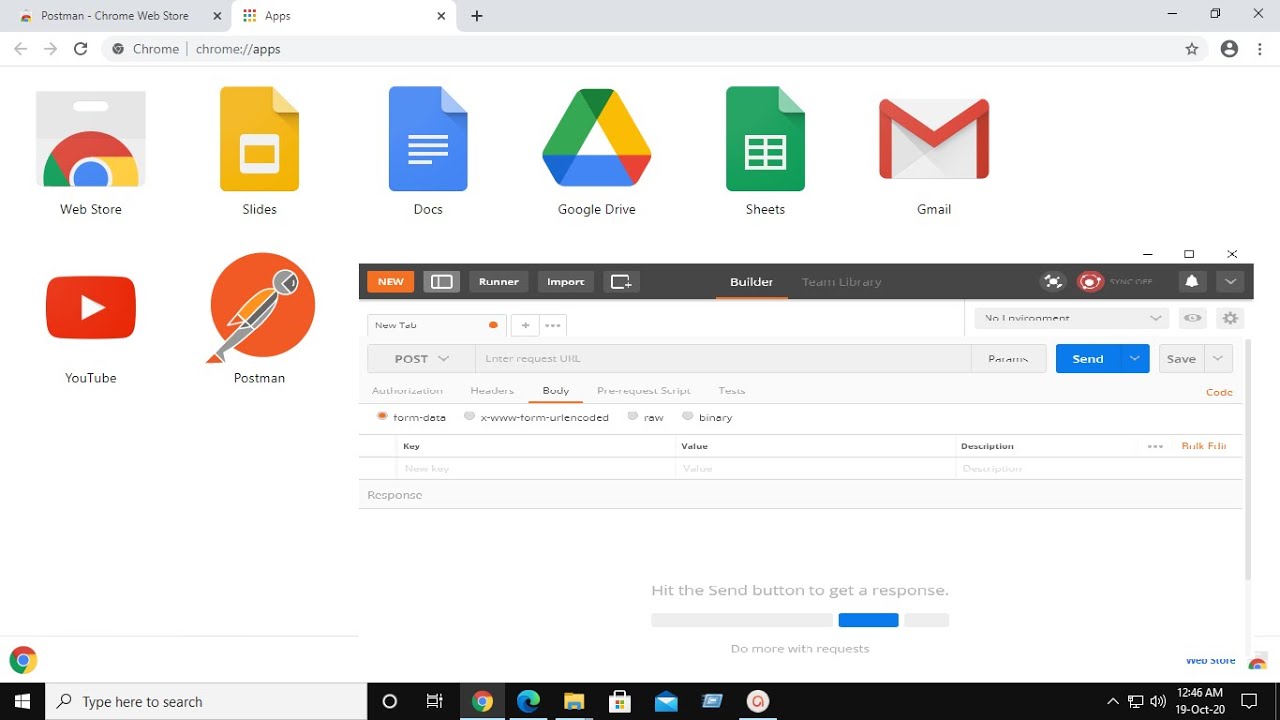
Postman Browser: Streamlining API Testing and Development
In the ever-evolving landscape of software development, Application Programming Interfaces (APIs) have become indispensable. These interfaces enable different software systems to communicate and exchange data seamlessly. As APIs grow in complexity, the need for robust testing and development tools becomes paramount. Enter Postman, a widely recognized platform for API development. While Postman is commonly used as a desktop application, understanding the role of the Postman browser and its capabilities is crucial for modern developers.
This article delves into the Postman browser, exploring its functionalities, benefits, and how it streamlines API testing and development workflows. We will cover everything from its core features to advanced use cases, providing a comprehensive overview for both beginners and seasoned professionals.
What is Postman?
Before discussing the Postman browser, it’s essential to grasp the fundamentals of Postman itself. Postman is a collaboration platform for API development, used by millions of developers worldwide. It simplifies each step of the API lifecycle and streamlines collaboration, enabling you to create better APIs—faster.
Key features of Postman include:
- API Client: Send HTTP, WebSocket, and GraphQL requests and inspect responses.
- API Design and Mocking: Design APIs using the OpenAPI Specification (OAS) and create mock servers to simulate API behavior.
- Automated Testing: Write and run automated tests to ensure API reliability and performance.
- Collaboration: Share APIs and collections with team members to facilitate collaboration.
- Documentation: Generate API documentation to help users understand and use your APIs.
Understanding the Postman Desktop App vs. Postman Browser
While the Postman desktop application is the primary tool for many developers, the Postman browser version (accessed through a web browser) offers similar functionalities, with some key differences. The Postman browser app allows users to access and use Postman directly from their browser without needing to download and install the desktop application. This can be particularly useful in environments where installing software is restricted or when using different operating systems.
Postman originally started as a Chrome browser extension before evolving into the desktop app we know today. The Postman browser version represents a return to its roots, leveraging modern browser technologies to provide a seamless API development experience.
Key Differences:
- Installation: The desktop app requires installation, while the Postman browser version is accessible directly through a web browser.
- Operating System: The desktop app is compatible with multiple operating systems (Windows, macOS, Linux), while the Postman browser version is platform-independent.
- Functionality: While the core functionalities are similar, the desktop app may offer more advanced features and integrations compared to the Postman browser version.
- Offline Access: The desktop app can be used offline (with some limitations), while the Postman browser version requires an internet connection.
Benefits of Using the Postman Browser
The Postman browser offers several advantages for API developers:
Accessibility
One of the primary benefits of the Postman browser is its accessibility. Developers can access Postman from any device with a web browser and an internet connection. This eliminates the need to install the desktop application, making it convenient for users who work on multiple machines or in environments where software installation is restricted.
Cross-Platform Compatibility
The Postman browser is platform-independent, meaning it works seamlessly across different operating systems. Whether you’re using Windows, macOS, Linux, or even ChromeOS, you can access Postman through your browser without compatibility issues.
Simplified Collaboration
The Postman browser facilitates collaboration by allowing developers to easily share API collections and environments. Team members can access and modify these resources directly through the browser, streamlining the collaboration process. [See also: API Collaboration Best Practices]
Reduced Overhead
Using the Postman browser can reduce overhead by eliminating the need to manage software updates and installations. The browser version is automatically updated, ensuring that users always have access to the latest features and bug fixes.
Lightweight and Fast
The Postman browser is typically more lightweight and faster than the desktop application, especially on older or less powerful machines. This can improve performance and reduce resource consumption, making it a viable option for developers with limited hardware resources.
Key Features of the Postman Browser
The Postman browser offers a wide range of features for API testing and development:
API Client
The core functionality of Postman is its API client, which allows you to send HTTP requests to API endpoints and inspect the responses. The Postman browser supports various HTTP methods (GET, POST, PUT, DELETE, etc.) and allows you to set headers, parameters, and request bodies.
Collections
Postman collections are groups of API requests that can be organized and shared. The Postman browser allows you to create, manage, and run collections, making it easy to test multiple API endpoints in a sequential manner.
Environments
Environments in Postman allow you to define variables that can be used in API requests. This is useful for managing different configurations, such as development, testing, and production environments. The Postman browser supports the creation and management of environments.
Automated Testing
Postman allows you to write automated tests to ensure API reliability and performance. The Postman browser supports writing and running tests using JavaScript. Tests can be added to individual requests or to entire collections.
Collaboration Tools
The Postman browser provides collaboration tools that allow you to share APIs and collections with team members. You can invite collaborators to your workspace and grant them different levels of access. [See also: Effective Team Collaboration in API Development]
Documentation Generation
Postman can generate API documentation based on the OpenAPI Specification (OAS). The Postman browser allows you to generate and view API documentation, making it easier for users to understand and use your APIs.
How to Use the Postman Browser
Using the Postman browser is straightforward. Here’s a step-by-step guide:
- Open your web browser: Launch your preferred web browser (e.g., Chrome, Firefox, Safari).
- Navigate to the Postman website: Go to the official Postman website.
- Sign in or create an account: If you already have a Postman account, sign in. If not, create a new account.
- Access the web version: Once signed in, you will be directed to the Postman browser interface.
- Start using Postman: You can now start creating API requests, collections, and environments.
Advanced Use Cases for the Postman Browser
The Postman browser can be used in various advanced scenarios:
Continuous Integration/Continuous Deployment (CI/CD)
The Postman browser can be integrated into CI/CD pipelines to automate API testing as part of the software development process. This helps ensure that APIs are reliable and performant before being deployed to production. [See also: Automating API Testing in CI/CD Pipelines]
Monitoring APIs
The Postman browser can be used to monitor APIs and detect issues before they impact users. You can create monitors that periodically send requests to API endpoints and check for errors or performance degradation.
Performance Testing
The Postman browser can be used to conduct performance testing by sending a large number of requests to API endpoints and measuring response times. This helps identify bottlenecks and optimize API performance.
Security Testing
The Postman browser can be used to perform security testing by sending malicious requests to API endpoints and checking for vulnerabilities. This helps ensure that APIs are secure and protected against attacks.
Tips and Best Practices for Using the Postman Browser
To get the most out of the Postman browser, consider the following tips and best practices:
- Organize your collections: Group related API requests into collections to keep your workspace organized.
- Use environments: Use environments to manage different configurations, such as development, testing, and production.
- Write automated tests: Write automated tests to ensure API reliability and performance.
- Collaborate with your team: Share APIs and collections with team members to facilitate collaboration.
- Use documentation: Generate API documentation to help users understand and use your APIs.
- Stay updated: Keep your Postman browser updated to take advantage of the latest features and bug fixes.
Troubleshooting Common Issues with the Postman Browser
While the Postman browser is generally reliable, you may encounter some issues. Here are some common problems and their solutions:
- Connection issues: Ensure that you have a stable internet connection. If you’re behind a firewall or proxy, configure Postman to use the appropriate settings.
- Authentication errors: Double-check your authentication credentials and ensure that you’re using the correct authentication method.
- Request errors: Verify that your API requests are correctly formatted and that you’re sending the correct parameters and headers.
- Response errors: Inspect the API responses to identify any errors or issues. Use the Postman console to debug your requests.
- Performance issues: If you’re experiencing performance issues, try clearing your browser cache and cookies. You can also try using a different browser.
The Future of Postman and Browser-Based API Development
The future of Postman and browser-based API development looks promising. As web technologies continue to evolve, we can expect the Postman browser to become even more powerful and feature-rich. The trend towards cloud-based development tools is likely to drive further adoption of browser-based API platforms.
Postman is continuously improving its platform and adding new features to meet the evolving needs of API developers. We can expect to see more advanced collaboration tools, improved automation capabilities, and tighter integration with other development tools. [See also: The Future of API Development Tools]
Conclusion
The Postman browser is a valuable tool for API developers, offering accessibility, cross-platform compatibility, and simplified collaboration. Whether you’re a beginner or an experienced professional, the Postman browser can help you streamline your API testing and development workflows. By understanding its features, benefits, and best practices, you can leverage the Postman browser to create better APIs—faster.
In conclusion, the Postman browser is more than just a convenience; it’s a strategic asset for modern development teams, providing the flexibility and efficiency needed to thrive in today’s fast-paced environment. Embracing the Postman browser can significantly enhance your API development process, leading to more robust and reliable software solutions.

